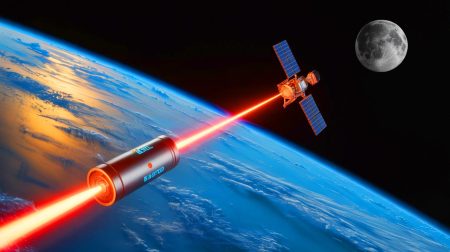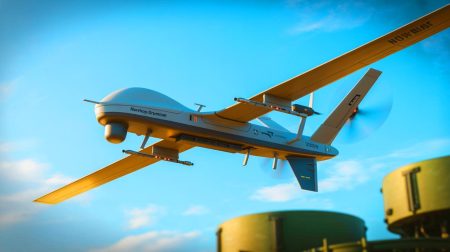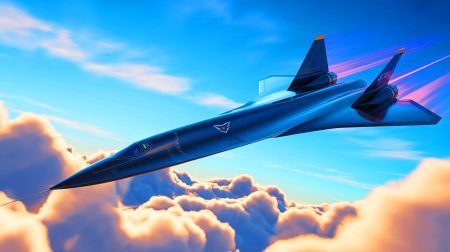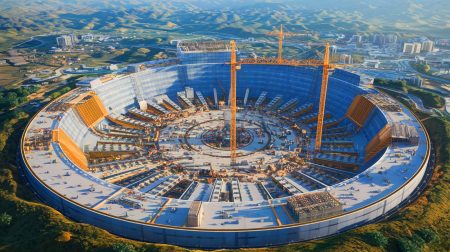| IN A NUTSHELL |
|
China’s recent achievement in space exploration marks a groundbreaking milestone in laser technology. The nation successfully fired a precision laser across over 80,000 miles of space to bounce it off a satellite orbiting the Moon during daylight. This feat showcases China’s relentless pursuit of technological advancement and strengthens its position in the global space race. The experiment, conducted by the Deep Space Exploration Laboratory (DSEL), plays a crucial role in China’s ambitious plans to establish a permanent lunar presence by 2035. This article delves into the intricate details of this remarkable achievement and its implications for future space missions.
Precision and Mastery: The Art of Satellite Laser Ranging
Satellite laser ranging is considered the gold standard for determining satellite orbits with pinpoint accuracy. The process involves firing nanosecond pulses from ground stations, which bounce off retroreflectors on spacecraft and return to reveal the distance down to centimeters. While this technique is routine for low-Earth satellites, the challenge multiplies when dealing with the Earth-Moon distance, especially under daylight conditions. China’s recent success in overcoming solar background noise to achieve accurate measurements during daylight expands the limits of this technology significantly.
This remarkable precision is likened to “aiming at a sub-millimeter target—essentially a single hair—from over 6.2 miles away.” By achieving such accuracy, China can now gather orbital data whenever the Tiandu-1 satellite passes within view, enhancing the frequency and reliability of measurements. This development is crucial for the planned Queqiao constellation, which aims to provide continuous communications and navigation support for various lunar missions.
A Step Closer to China’s Lunar Ambitions
China’s space endeavors are part of a more extensive plan to establish a permanent foothold on the Moon. The Tiandu-1 satellite, along with Tiandu-2 and the Queqiao-2 relay satellite, form the backbone of China’s lunar exploration infrastructure. These satellites have already delivered detailed images of the lunar surface and demonstrated successful cross-link communications, paving the way for more ambitious missions.
The China National Space Administration (CNSA) has set an ambitious timeline, targeting a crewed lunar landing by 2030. The construction of the International Lunar Research Station, a collaborative effort with Russia, is expected to begin by 2035. Laser ranging technology will play a pivotal role in various aspects of lunar exploration, including approach-and-landing guidance and the coordination of rover fleets exploring the Moon’s surface.
Expanding the Horizons of Earth-Moon Links
With the success of the daylight laser ranging experiment, DSEL plans to extend daytime trials to longer ranges and higher repetition rates. This advancement will integrate more seamlessly into routine deep-space operations, enhancing the reliability of Earth-Moon links. The experiment follows the successful 2024 launch of Chang’e-6, which returned soil samples from the Moon’s far side, underscoring the importance of robust communication and navigation systems in space exploration.
Beyond laser technology, China is exploring other innovative solutions to support its lunar ambitions. The CNSA anticipates the need for a comprehensive space-traffic management system to handle the estimated 100,000 satellites in low Earth orbit by the decade’s end. In collaboration with Russia, China is also evaluating nuclear reactors and alternative power sources for the International Lunar Research Station under the Chang’e-8 mission.
Future Prospects: Challenges and Opportunities
China’s achievements in laser technology and lunar exploration present both challenges and opportunities. The nation’s advancements in space technology could spur increased competition among space-faring nations, potentially leading to new collaborations and innovations. However, the growing number of satellites in orbit also raises concerns about space traffic management and the potential for collisions.
As China continues to push the boundaries of space exploration, the implications for international cooperation and competition remain to be seen. How will other nations respond to China’s rapid advancements in space technology? Will these achievements lead to new opportunities for collaboration, or will they intensify the global space race? The future of space exploration is undoubtedly intriguing, with many questions yet to be answered.
Did you like it? 4.5/5 (29)











Wow, I didn’t even know you could hit the moon with a laser! 🌕
China sure is making strides in space technology, huh?
How will this affect international relationships in space exploration?
Is this the start of a new space race or just a step in China’s space journey? 🤔
What’s next? Lasers on Mars? 😂
This is amazing. What implications does this have for future space missions?
China’s not messing around. Permanent lunar presence by 2035 sounds ambitious.